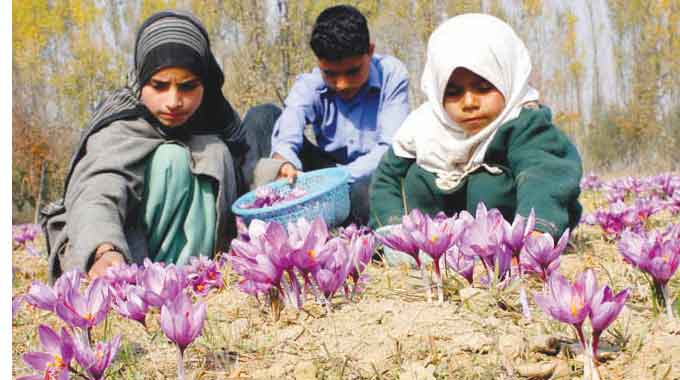Saffron is the colour of the country: MP CM
“We are opposed to the Congress’ opposition to saffron and we strongly criticize such attitude of the Congress,” Dr Yadav averred, while addressing media persons at Bhopal.

SAFFRON
Saffron production has fallen in its traditional cultivation area of Pampore near Srinagar, thanks to climate change and the haphazardly set up cement factories, Kashmir’s saffron has ruled the market over the years but is now facing neglect by the authorities.
The Rs 400-crore National Saffron Mission (NSM) launched by the Centre in 2010 to boost saffron cultivation has failed to yield the desired results even though the five-year project was extended by another two years in October 2015.
The project’s report card is dismal if one goes by the complaints of the saffron cultivators. However, officials connected with the Mission claim it is a success.
Advertisement
The NSM was launched in 2010 with an outlay of Rs 371 crore but it was enhanced to Rs 400 crore in 2015. Its duration, extended by two years then, ended two months ago.
Instead of rejuvenating saffron cultivation in Kashmir, the total area under saffron cultivation had declined to about 3,700 hectares from the 5,700 hectares in 1996.
Change of land use in the saffron growing areas was reportedly being done with impunity as land prices, particularly in south Kashmir, have considerably increased.
Those sticking to saffron cultivation are hit hard by the climate. Currently, a long dry spell has played spoilsport and in 2014, the floods played havoc in the valley. Saffron is a very delicate crop and gets destroyed to even with a little change of climate.
A little over 16,000 families are now engaged in saffron cultivation in the Valley against 19,000 a few years ago.
About 7, 00 families in a couple of villages offered their lands for rejuvenation of saffron under the NSM in 2012.
However, there are complaints that contrary to the aim of the NSM, not only the area under saffron has decreased but the crop’s yield per hectare too has fallen.
Saffron production in the state in 2015-2016 had fallen to nearly 10 tonnes against about 12 tonnes in 2010-2011 when the NSM was launched.
Irrigation is a major problem faced by saffron growers who depend on rains. The NSM envisaged drilling of 109 borewells for sprinkler irrigation of saffron fields, but only four of the 85 wells dug so far are pumping water.
Advertisement